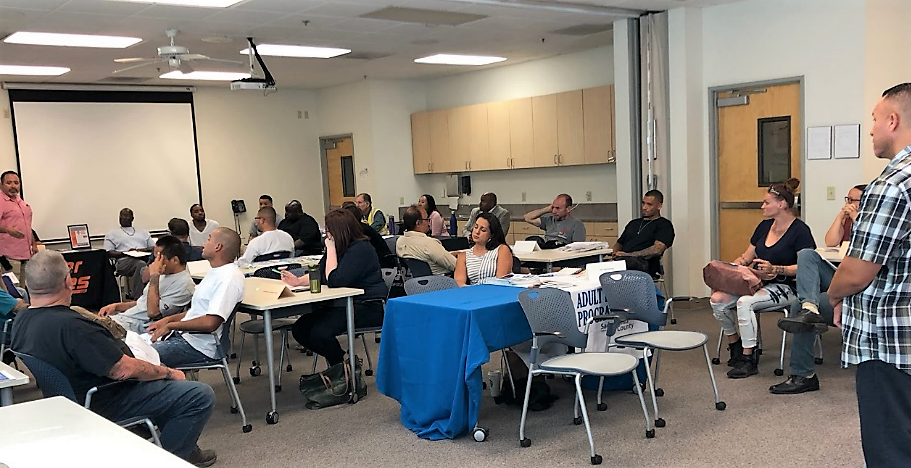Division of Adult Parole Operations (or DAPO) Northern Region successfully implemented the new criminogenic-needs based model for their Parole and Community Team ( or PACT) orientation meetings facilitated by the Adult Programs Unit (APU).
DAPO, in collaboration with community partners, is committed to reduce recidivism by providing evidence-based programming and promising practices to the parolee population. Criminogenic refers to attributes of the parolee directly linked to criminal behavior.
Cooperation with community stakeholders and resource providers for targeted programming is essential for successful reintegration of parolees into the community. The PACT meetings serve to create partnerships with parolees and the community in an ongoing effort to build their social capital.
This whole person approach encompasses community resource providers, social service agencies, local law enforcement agencies, and supportive networks in an effort to facilitate successful transition into the community. In addition, this model provides parolees direct access points for engaging in reentry resources and services specific to their individual criminogenic needs.
The Northern Region will continue to integrate proven best practices in the interest of providing a comprehensive experience to serve the identified needs of parolees, as the development of this program utilized confidential surveys driven by the parolee population, as well as the partner providers, to gather information for building and improving upon this model.
This new PACT model requires advance preparation by the APU staff to provide guidance that is specific to each parolee in attendance, including, but not limited to completing the following:
- Extracting real time information from department databases to identify parolees who have been recently released from jail or state prison to parole supervision, their criminogenic needs (housing, employment, substance use, etc.), and documented individual needs (needs assessments, physical and mental health evaluations, etc.)
- Preparing a Personal Action Plan for each parolee identified to have been released from custody since the last PACT meeting. The Personal Action Plan highlights/identifies services for the offenders to target based on validated assessment tools.
- Providing restitution balances for all parolees in attendance with outstanding restitution obligations. This Restorative Justice component allows for the parolee to engage with the Office of Victim and Survivor Rights and Services regarding restitution balances and facilitates meeting obligations.
- Arranging seats and tables in new the PACT format. Identifying, grouping, and creating stations for providers based on resources and services provided. Making seating available for parolees at the providers’ stations to encourage: Individualized discussion platform between parolees and service providers; parolee empowerment through self-evaluation and identification of available services to best target their needs.
- Continued outreach and partnership development with local law enforcement agencies, community resource providers, and social service agencies. While recognizing that parolees are required to attend the PACT orientation meeting in their respective county of residence upon any release from jail or state prison, the overall experience must be customized to each individual parolee to enhance successful outcomes. Timely access to community resources, programs, and services improves public safety and strengthens successful reentry. By reinforcing shared responsibility and engagement in their reentry plan, each parolee learns to start building their social capital through guided personal resource development.
- Some of the programs, resources, and services available at the PACT meetings include education, employment, mental health, subsistence resources (clothing, meals, transportation, etc.), Substance Use Disorder Treatment, transitional living/sober living, wraparound programming for families, violence intervention and vocational training.
